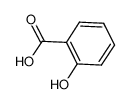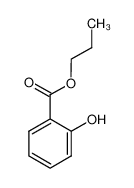| Product name | Propyl nitrate |
|---|
| Product number | - |
|---|---|
| Other names | UN1865 |
| Identified uses | For industry use only. |
|---|---|
| Uses advised against | no data available |
| Company | MOLBASE (Shanghai) Biotechnology Co., Ltd. |
|---|---|
| Address | Floor 4 & 5, Building 12, No. 1001 North Qinzhou Road, Xuhui District, Shanghai, China |
| Telephone | +86(21)64956998 |
| Fax | +86(21)54365166 |
| Emergency phone number | +86-400-6021-666 |
|---|---|
| Service hours | Monday to Friday, 9am-5pm (Standard time zone: UTC/GMT +8 hours). |
no data available
2.2 GHS label elements, including precautionary statements| Pictogram(s) | no data available |
|---|---|
| Signal word | no data available |
| Hazard statement(s) | no data available |
| Precautionary statement(s) | |
| Prevention | no data available |
| Response | no data available |
| Storage | no data available |
| Disposal | no data available |
no data available
3.Composition/information on ingredients 3.1 Substances| Chemical name | Common names and synonyms | CAS number | EC number | Concentration |
|---|---|---|---|---|
| Propyl nitrate | Propyl nitrate | 627-13-4 | none | 100% |
Consult a physician. Show this safety data sheet to the doctor in attendance.
If inhaledFresh air, rest. Artificial respiration may be needed. Refer for medical attention. See Notes.
In case of skin contactRinse and then wash skin with water and soap.
In case of eye contactFirst rinse with plenty of water for several minutes (remove contact lenses if easily possible), then refer for medical attention.
If swallowedRinse mouth. Refer for medical attention .
4.2 Most important symptoms/effects, acute and delayedExposure can cause anoxia and cyanosis. Other effects are weakness, dizziness, and severe headaches. (USCG, 1999)
4.3 Indication of immediate medical attention and special treatment needed, if necessaryMaintain an open air way and assist ventilations if necessary. Administer supplemental oxygen. Treat hypotension with supine positioning, intravenous crystalloid fluids. and low-dose pressors if needed.Monitor vital signs and ECG for 4 to 6 hours. Symptomatic methemoglobinemia may be treated with methylene blue. Hemodialysis and hemoperfusion are not effective. Sever methemoglobinemia in infants not responsive to methylene blue therapy may require exchange transfusion.
5.Fire-fighting measures 5.1 Extinguishing media Suitable extinguishing mediaUse dry chemical, foam, carbon dioxide, or water spray. Water may be ineffective. Use water spray to keep fire-exposed containers cool. Fight fire from protected location or maximum possible distance.
5.2 Specific hazards arising from the chemicalSpecial Hazards of Combustion Products: Toxic gases and vapors, such as oxides of nitrogen and carbon monoxide, may be released in a fire. (USCG, 1999)
5.3 Special protective actions for fire-fightersWear self-contained breathing apparatus for firefighting if necessary.
6.Accidental release measures 6.1 Personal precautions, protective equipment and emergency proceduresUse personal protective equipment. Avoid dust formation. Avoid breathing vapours, mist or gas. Ensure adequate ventilation. Evacuate personnel to safe areas. Avoid breathing dust. For personal protection see section 8.
6.2 Environmental precautionsRemove all ignition sources. Personal protection: self-contained breathing apparatus. Ventilation. Collect leaking and spilled liquid in sealable containers as far as possible. Absorb remaining liquid in sand or inert absorbent. Then store and dispose of according to local regulations. Do NOT wash away into sewer.
6.3 Methods and materials for containment and cleaning upEliminate all ignition sources. Stop or control the leak, if this can be done without undue risk. Use appropriate foam to blanket release and suppress vapors. Absorb in noncombustible material for proper disposal.
7.Handling and storage 7.1 Precautions for safe handlingAvoid contact with skin and eyes. Avoid formation of dust and aerosols. Avoid exposure - obtain special instructions before use.Provide appropriate exhaust ventilation at places where dust is formed. For precautions see section 2.2.
7.2 Conditions for safe storage, including any incompatibilitiesWell closed. Cool. Fireproof. Separated from strong oxidants, combustible substances and reducing agents.
8.Exposure controls/personal protection 8.1 Control parameters Occupational Exposure limit valuesRecommended Exposure Limit: 10 Hr Time-Weighted Avg: 25 ppm (105 mg/cu m); 15 Min Short-Term Exposure Limit: 40 ppm (170 mg/cu m).
Biological limit valuesno data available
8.2 Appropriate engineering controlsHandle in accordance with good industrial hygiene and safety practice. Wash hands before breaks and at the end of workday.
8.3 Individual protection measures, such as personal protective equipment (PPE) Eye/face protectionSafety glasses with side-shields conforming to EN166. Use equipment for eye protection tested and approved under appropriate government standards such as NIOSH (US) or EN 166(EU).
Skin protectionWear impervious clothing. The type of protective equipment must be selected according to the concentration and amount of the dangerous substance at the specific workplace. Handle with gloves. Gloves must be inspected prior to use. Use proper glove removal technique(without touching glove's outer surface) to avoid skin contact with this product. Dispose of contaminated gloves after use in accordance with applicable laws and good laboratory practices. Wash and dry hands. The selected protective gloves have to satisfy the specifications of EU Directive 89/686/EEC and the standard EN 374 derived from it.
Respiratory protectionWear dust mask when handling large quantities.
Thermal hazardsno data available
9.Physical and chemical properties| Physical state | N-propyl nitrate is a white to straw-colored liquid with an ether-like odor. About the same density as water and insoluble in water. Flash point 21.11°C. Vapors heavier than air. Used as a fuel. Shock sensitive. The shock sensitivity is removed by addition of 1-2% of propane, butane, chloroform, ethyl ether, or methyl ether. |
|---|---|
| Colour | Pale yellow liquid |
| Odour | Sweet sickly odor |
| Melting point/ freezing point | -100ºC |
| Boiling point or initial boiling point and boiling range | 110.5ºC |
| Flammability | Class IB Flammable Liquid: Fl.P. below 22.78°C and BP at or above 37.78°C.Highly flammable. Gives off irritating or toxic fumes (or gases) in a fire. |
| Lower and upper explosion limit / flammability limit | no data available |
| Flash point | 20°C (USCG, 1999) |
| Auto-ignition temperature | 175°C (USCG, 1999) |
| Decomposition temperature | no data available |
| pH | no data available |
| Kinematic viscosity | no data available |
| Solubility | Slight (NIOSH, 2016) |
| Partition coefficient n-octanol/water (log value) | log Kow = 1.74 /Estimated/ |
| Vapour pressure | 18 mm Hg (NIOSH, 2016) |
| Density and/or relative density | 1.05 |
| Relative vapour density | (air = 1): 3.6 |
| Particle characteristics | no data available |
no data available
10.2 Chemical stabilityThe shock-sensitive nitrate is desensitised by 1-2% of propane, butane, chloroform, dimethyl ether or diethyl ether.
10.3 Possibility of hazardous reactions...It is... flammable, and poses a dangerous fire and explosion risk.The vapour is heavier than air and may travel along the ground; distant ignition possible.Organonitrates, such as N-PROPYL NITRATE, range from slight to strong oxidizing agents. If mixed with reducing agents, including hydrides, sulfides and nitrides, they may begin a vigorous reaction that culminates in a detonation. Nitroalkanes are milder oxidizing agents, but still react violently with reducing agents at higher temperature and pressures. Nitroalkanes react with inorganic bases to form explosive salts. The presence of metal oxides increases the thermal sensitivity of nitroalkanes. Nitroalkanes with more than one nitro group are generally explosive. Contact with either strong oxidizers or with combustibles may cause fires and explosions.
10.4 Conditions to avoidno data available
10.5 Incompatible materials...It is considered a strong oxidizing agent... .
10.6 Hazardous decomposition productsCombustion by-products may include oxides of nitrogen.
11.Toxicological information Acute toxicity- Oral: no data available
- Inhalation: LC50 Rat inhalation 9,000-10,000 ppm/4 hr
- Dermal: no data available
no data available
Serious eye damage/irritationno data available
Respiratory or skin sensitizationno data available
Germ cell mutagenicityno data available
Carcinogenicityno data available
Reproductive toxicityno data available
STOT-single exposureno data available
STOT-repeated exposureno data available
Aspiration hazardno data available
12.Ecological information 12.1 Toxicity- Toxicity to fish: no data available
- Toxicity to daphnia and other aquatic invertebrates: no data available
- Toxicity to algae: no data available
- Toxicity to microorganisms: no data available
No data were located regarding the biodegradation of n-propyl nitrate or other low molecular weight alkyl nitrates(SRC). Nitroglycerin (1,2,3-propanetriol, trinitrate) was completely biodegraded in 13 days using river water and river water/sediment microcosms obtained from a river near a munitions facility in Virginia(1). Nitroglycerin was also biodegraded about 53% in five days using an activated sludge inoculum in a shake flask test that was run at 30°C(2). These results suggest that alkyl nitrates may undergo biodegradation under acclimated conditions(SRC).
12.3 Bioaccumulative potentialAn estimated BCF of 5 was calculated for n-propyl nitrate(SRC), using a measured water solubility of 3,290 mg/L(1) and a regression-derived equation(2). According to a classification scheme(3), this BCF suggests the potential for bioconcentration in aquatic organisms is low(SRC).
12.4 Mobility in soilThe Koc for n-propyl nitrate can be estimated to be 40(SRC)using a measured water solubility of 3,290 mg/L(1) and a regression-derived equation(2) According to a classification scheme(3), this estimated Koc value suggests that n-propyl nitrate is expected to have very high mobility in soil(SRC).
12.5 Other adverse effectsno data available
13.Disposal considerations 13.1 Disposal methods ProductThe material can be disposed of by removal to a licensed chemical destruction plant or by controlled incineration with flue gas scrubbing. Do not contaminate water, foodstuffs, feed or seed by storage or disposal. Do not discharge to sewer systems.
Contaminated packagingContainers can be triply rinsed (or equivalent) and offered for recycling or reconditioning. Alternatively, the packaging can be punctured to make it unusable for other purposes and then be disposed of in a sanitary landfill. Controlled incineration with flue gas scrubbing is possible for combustible packaging materials.
14.Transport information 14.1 UN Number| ADR/RID: UN1865 | IMDG: UN1865 | IATA: UN1865 |
| ADR/RID: n-PROPYL NITRATE |
| IMDG: n-PROPYL NITRATE |
| IATA: n-PROPYL NITRATE |
| ADR/RID: 3.1 | IMDG: 3.1 | IATA: 3.1 |
| ADR/RID: II | IMDG: II | IATA: II |
| ADR/RID: no | IMDG: no | IATA: no |
no data available
14.7 Transport in bulk according to Annex II of MARPOL 73/78 and the IBC Codeno data available
15.Regulatory information 15.1 Safety, health and environmental regulations specific for the product in question| Chemical name | Common names and synonyms | CAS number | EC number |
|---|---|---|---|
| Propyl nitrate | Propyl nitrate | 627-13-4 | none |
| European Inventory of Existing Commercial Chemical Substances (EINECS) | Listed. | ||
| EC Inventory | Listed. | ||
| United States Toxic Substances Control Act (TSCA) Inventory | Listed. | ||
| China Catalog of Hazardous chemicals 2015 | Listed. | ||
| New Zealand Inventory of Chemicals (NZIoC) | Listed. | ||
| Philippines Inventory of Chemicals and Chemical Substances (PICCS) | Listed. | ||
| Vietnam National Chemical Inventory | Not Listed. | ||
| Chinese Chemical Inventory of Existing Chemical Substances (China IECSC) | Not Listed. | ||
| Creation Date | Aug 18, 2017 |
|---|---|
| Revision Date | Aug 18, 2017 |
- CAS: Chemical Abstracts Service
- ADR: European Agreement concerning the International Carriage of Dangerous Goods by Road
- RID: Regulation concerning the International Carriage of Dangerous Goods by Rail
- IMDG: International Maritime Dangerous Goods
- IATA: International Air Transportation Association
- TWA: Time Weighted Average
- STEL: Short term exposure limit
- LC50: Lethal Concentration 50%
- LD50: Lethal Dose 50%
- EC50: Effective Concentration 50%
- IPCS - The International Chemical Safety Cards (ICSC), website: http://www.ilo.org/dyn/icsc/showcard.home
- HSDB - Hazardous Substances Data Bank, website: https://toxnet.nlm.nih.gov/newtoxnet/hsdb.htm
- IARC - International Agency for Research on Cancer, website: http://www.iarc.fr/
- eChemPortal - The Global Portal to Information on Chemical Substances by OECD, website: http://www.echemportal.org/echemportal/index?pageID=0&request_locale=en
- CAMEO Chemicals, website: http://cameochemicals.noaa.gov/search/simple
- ChemIDplus, website: http://chem.sis.nlm.nih.gov/chemidplus/chemidlite.jsp
- ERG - Emergency Response Guidebook by U.S. Department of Transportation, website: http://www.phmsa.dot.gov/hazmat/library/erg
- Germany GESTIS-database on hazard substance, website: http://www.dguv.de/ifa/gestis/gestis-stoffdatenbank/index-2.jsp
- ECHA - European Chemicals Agency, website: https://echa.europa.eu/


































